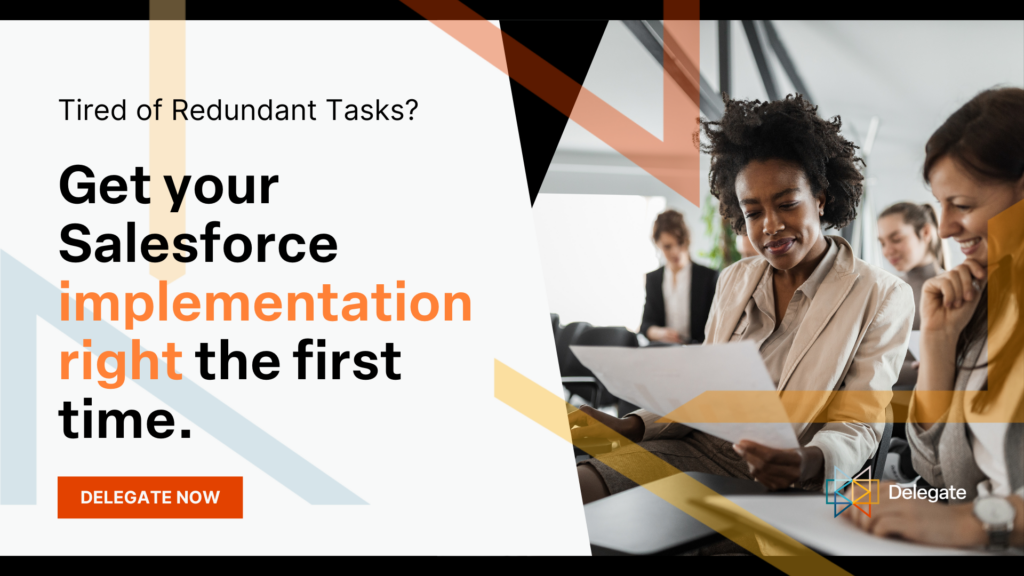The customer acquisition battleground is fiercer than ever. Approximately two-thirds (63%) of potential customers who inquire about a business are unlikely to become paying customers within the first three months. To win in this competitive landscape, companies need a strategic approach to acquiring new customers, and having the right Salesforce strategy would be a game changer.
Let’s dive into three actionable tips to leverage Salesforce functionalities and optimize your customer acquisition strategy today and beyond:
Tip #1: Master Your Data. Personalize Your Approach.
The key to successful customer acquisition lies in understanding your target audience and their behavior. Salesforce empowers you to centralize customer data from diverse sources, including website interactions, marketing campaigns, and social media engagement.
Here’s how to leverage Salesforce for data-driven acquisition:
- Build Comprehensive Customer Profiles: Consolidate all customer touchpoints into a unified profile within Salesforce. This includes contact details, demographics, website behavior, and past interactions. This holistic view allows you to understand your ideal customer profile and tailor your acquisition efforts accordingly.
- Segmentation is Key: Don’t treat all potential customers the same. Segment your customer base within Salesforce based on demographics, interests, or behavior. This allows you to create targeted marketing campaigns and messaging that resonate with each segment, increasing conversion rates.
- Leverage Lead Scoring: Qualify leads automatically using strategic Lead Scoring model. Assign points based on predefined criteria (e.g., job title, downloaded content, website interactions, webinar attendees, contact form filling) to identify high-potential leads that deserve immediate attention from your sales team.
Personalization is a powerful tactic that significantly contributes to Top-Of-The Funnel (TOFU) and speed up the buyer journey. Prominent marketers overwhelmingly agree, with 90% claiming that personalization plays a crucial role in enhancing business profitability. It involves tailoring marketing efforts to individual customers based on their unique characteristics and preferences. By understanding each customer’s unique preferences, behaviors, and purchase history, businesses can create highly targeted and relevant messaging that resonates with them.
Tip #2: Automate Workflows. Streamline Lead Nurturing.
Gone are the days of time-consuming manual outreach. From 2020 to 2022, Salesforce reported a significant upsurge in the demand for automation within businesses. Many companies put a higher focus on operational efficiency due to turnover rate and budget constraints. In this report, a remarkable 91% of respondents acknowledged an increase in automation adoption. The research and development (39%), administrative/operations (38%), customer service (33%), and marketing (26%) emerged as key departments driving this surge. Salesforce automation tools and workflows empower you to nurture potential prospects efficiently and convert them into loyal customers faster.
- Automated Email Workflows: Create personalized email drip campaigns triggered by specific lead behaviors. For example, send a welcome email to new leads or contacts with valuable resources or a follow-up email after a website visit showcasing relevant product demos. This automated nurturing keeps your brand top-of-mind and guides lead through the sales funnel seamlessly.
- Web Form Automation: Capture leads effortlessly with Salesforce web forms embedded within your website. These forms can automatically populate relevant customer data fields in Salesforce, saving time and minimizing manual data entry errors, further increase form conversion rate.
- Task Automation: Automate repetitive sales tasks like assigning leads to specific sales reps or sending follow-up reminders based on lead activity. This frees up your sales team’s valuable time to focus on building relationships and closing deals.
Tip #3: Measure, Analyze, and Adapt for Continuous Improvement.
The best acquisition strategies are data-driven and constantly evolving. Salesforce provides robust reporting and analytics tools to track the effectiveness of your efforts and identify areas for improvement.
- Track Key Metrics: Use reports and dashboards to monitor key acquisition metrics like lead generation cost, conversion rates, and sales cycle length. This data provides valuable insights into which marketing channels or pipeline sources are performing best and identifies areas where you can optimize your strategy.
- A/B Testing: Run frequent experiments. Salesforce allows you to run A/B tests on various aspects of your acquisition strategy, such as email subject lines, body copies, or landing page designs. By testing different approaches, you can identify what resonates best with your target audience and maximize your return on investment (ROI).
Don’t let the competitive customer acquisition landscape hold you back. Instead, get excited about future growth. By leveraging Salesforce’s functionalities and data-driven insights, you can personalize your approach, streamline lead nurturing, and continuously optimize your strategy for maximum revenue impact.
Ready to transform your customer acquisition efforts? Delegate team of Salesforce experts can help you craft a winning customer acquisition strategy today and beyond. Talk to us!
